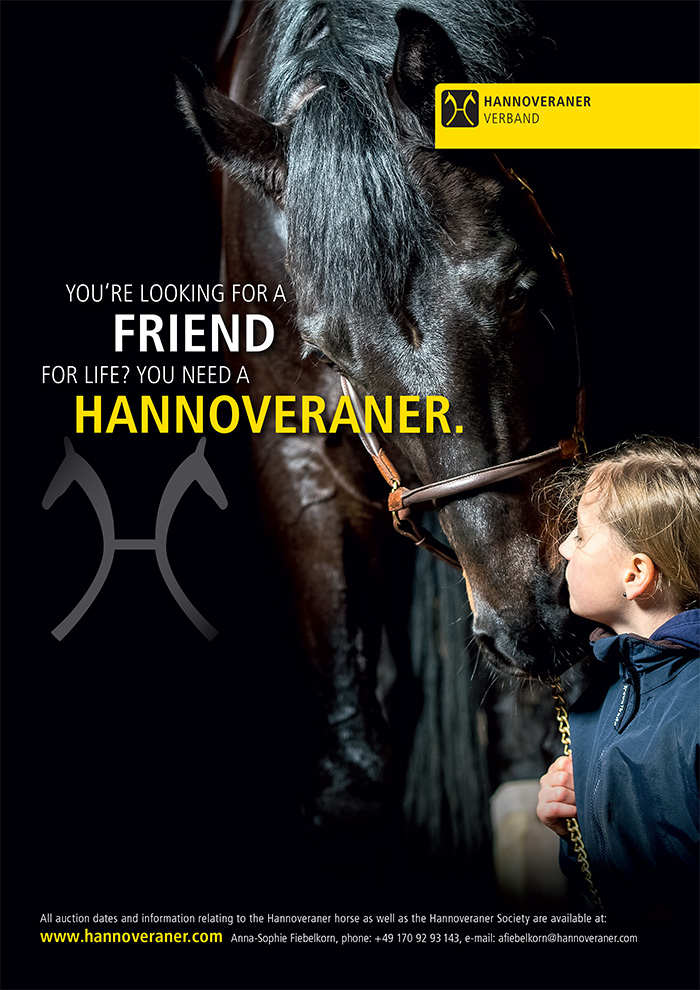A day in the life of a Verden Auction Horse
In the lead up to the Verden Auction, all horses are stabled at the Verband headquarters and wear catalogue numbers for easy and immediate identification.
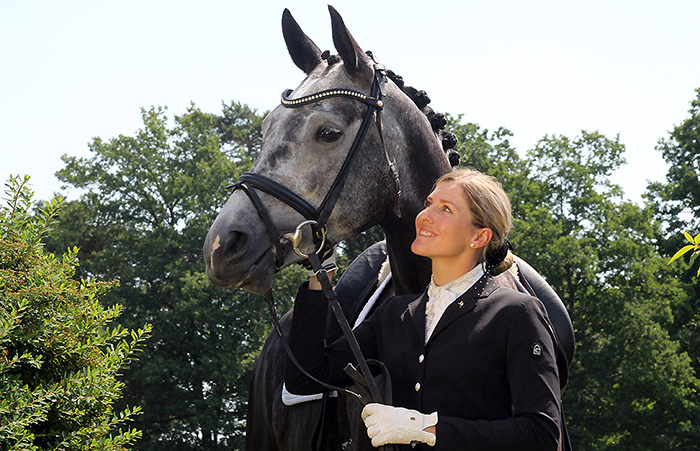
During training and trying of the horses, each horse has the number on the bridle, and the number also appears on his stable in his temporary home in Verden . This way spectators are able to easily and immediately access all the information about the horse, either on the website, in the catalogue, or in the training arena.
During the 13 day auction period all horses are ridden daily and trained until they are auctioned off on the day of the Sale – Saturday. All horses are stabled in Verden during the lead-up.
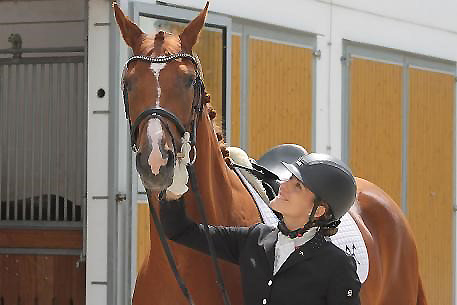
On the way to the first official presentation of the auction horses. (Photos: Kanz)
Before the auction the auction horses have to go through another vet check upon arrival at the Verden stables. At the beginning of each auction period auction, manager, trainers, and vet Dr. Frank Reimann thoroughly examine every horse before the horses are allowed to move into their stables and start the training with the auction riders.
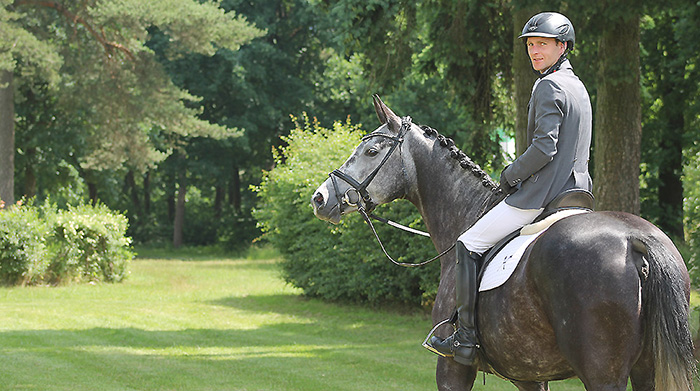
The riders and grooms jointly take care of their horses – and have 7 to 9 horses in their team. The day in Verden starts at 7 am for everyone. Then all the horses get their morning grains mixed with some carrots. As the team goes for breakfast, there’s satisfied silence with only the sound the chewing of the horses in the stable.
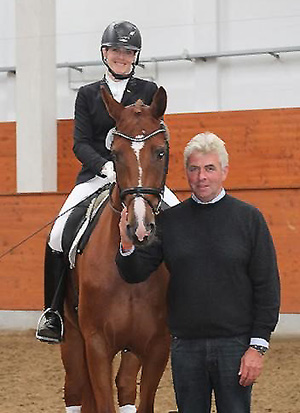
Always present to support horses and rider: Trainer Hans-Heinrich Meyer zu Strohen. Photo: Kanz.
After breakfast the daily vet check follows. The grooms take the temperature and vet Dr Frank Reimann and auction manager Jörg-Wilhelm Wegener look at the horses. The well-being of the horses has utmost priority, and so all information from riders, grooms, customer advisors, and trainers comes together and is evaluated before the training starts. The first days of the pre-auction period serve to get the horses acclimatized to the new environment and the new rider. The focus is to make the horses comfortable with everything, and give them a good feeling with all that is going on around them. Even though the first official presentation does not take place for about a week into the pre-auction period, the training is public from day one. Every morning a timetable for the working of the horses is published online, to enable interested buyers to just stop by and see their favorite horse.
During the warm-up, horses and riders are supervised by no less than Hans-Heinrich Meyer zu Strohen, German National Trainer for Young riders as well as for Young Dressage Horses. He knows the riders and his lifetime of experience is a great asset to the team. He helps to identify the strengths of every horse, and has a good feeling for the right balance between work and relaxation. At the end of the training, the horses go into the auction arena where they are briefly presented in walk, trot, and canter, commented on by Auction trainer Jörn Ahrens and Auction manager Jörg-Wilhelm Wegener. This brief presentation allows the customers and spectators to see all the horses in a very short amount of time and objectively compare them.
Before a customer tries one of the horses, he has already seen the video online and contacted one of the customer advisors to make an appointment to test ride the horse. Upon arrival at the Verband, he meets the auction groom with the horse in the stable. The customer is invited to, according to preference, stay with the horse and get an impression of its behavior while tacking up and during the warm-up, or to go and have a look at the other horses of the collection, to have something to compare against the candidate of choice. Together with the customer advisor, the customer watches the horses during the training and the customer advisor can answer any more questions, before the rider tries the horse. During the test ride, the auction rider and customer advisor provide help where needed and keep a close eye on their horses. Especially for the customer advisor, it is important to see every horse not only under the auction rider, but also during the test rides to get a good idea about the needs of the clients as well as for the behavior of each horse, which allows the advisor to help pair the right horse, to the right rider.
After the test ride, the auction rider brings the horse back to the groom who takes care of the horse and gives it a refreshing shower. After a little treat for the completed work the horse is taken outside to dry in the sun, relax and graze a little. Meanwhile the prospective customer is with vet Dr Frank Reimann who can provide all necessary details on x-rays and clinical examination. If everything is fine with the customer’s favorite horse and he decides wants to bid on it, good tickets for Auction Day in Verden can immediately be reserved.
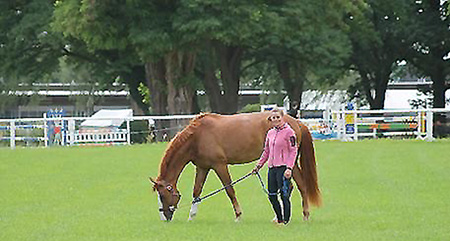
Afternoon relaxing time in Verden. Photo: Kanz.
In the afternoon, the horses can enjoy their free time outside. “The young horses have to work a lot during the auction period. It is nice for them to go outside just to do as they like afterwards. That keeps them happy”, say the auction trainers.
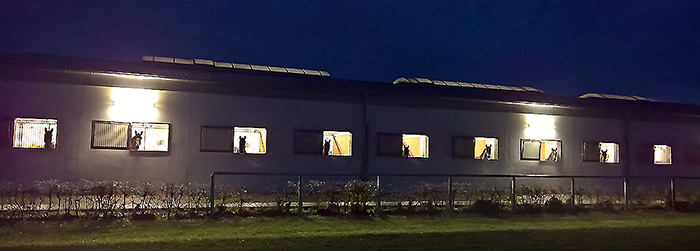
Verden Auction on March, 24th – Sport Horses and Foals
This article has been prepared from material supplied by the Hanoverian Verband



